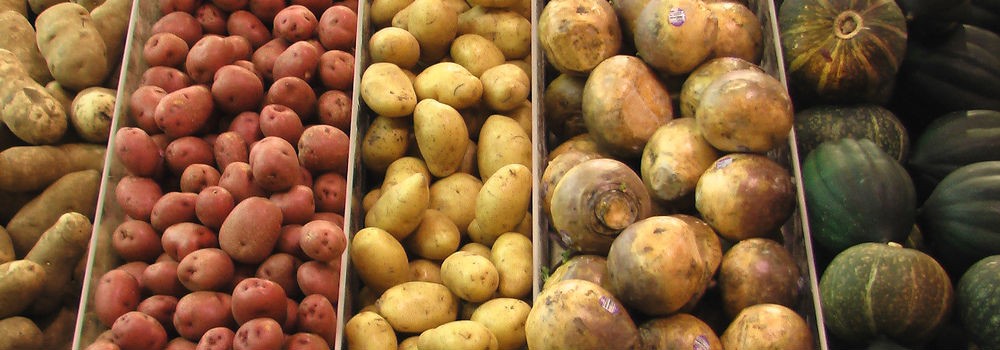Climate Change Doesn’t Pass the Hot Potato
Climate change is affecting the growth of potatoes, the world’s fourth largest food crop.
By: Grace Kennedy
It’s a clash of the scientists when it comes to the future of sweet potatoes in a carbon saturated world. From Hawaii to Peru to the Annapolis Valley, the importance of change in the developing world’s fourth largest food crop is of varying degrees.
Benjamin Czeck, a graduate student at the University of Hawaii, conducted a study in the fall of 2011 on the effects of CO2 on sweet potatoes. He looked at four different concentrations of carbon dioxide, and found the sweet potato root could grow up to twice its normal size when there was nearly four times the current amount of carbon dioxide in the atmosphere.
Czeck also found decreases in several micro-minerals, such as iron, phosphorous, and manganese. Iron, which is beneficial for bones, blood, and protein fixation, decreased by as much as 45 per cent; phosphorous, important for energy, protein, and bones as well, by 25 per cent; and manganese, which is an anti-oxidant to help with tissue health, by 75 per cent.
In addition to these, the protein content in sweet potatoes also decreased by 32 to 43 per cent, while the increased carbohydrates by 4 to 4.7 per cent. Although sweet potatoes are not a significant source of protein – there are only about 1.37 grams of protein in 100 grams of an orange-fleshed sweet potato, or about one paper clip in half a cup of water – this is still a substantial change.
“Because we have high obesity rate and we’re not good at eating food with these sorts of minerals, eating vegetables and stuff like that, it’s a negative thing,” says Czeck on the nutrition changes.
“In the future, if this is a response – this decreased protein, increased carbohydrates and decreased minerals – the diet that we have is going to have to change even more to get what is essential for our bodies to be healthy.”
The nitrogen levels in the soil remained the same for each level of carbon dioxide, and this is where other scientists begin to have issues. Nitrogen helps to change the sugars created by photosynthesis into protein for the plant’s long-term use; if there is more carbon dioxide, there will be more sugar, and less nitrogen to change it into protein.
Czeck doesn’t think that the sweet potato would be able to take up more nitrogen from the soil than it already able to do, but others such as David Burton, an agriculturalist at Dalhousie University, and Viliam Zvalo, a horticulturalist with the company Perennia, think that it will.
If sweet potatoes can take up more nitrogen, then there is a possibility that the protein content would remain stable.
“It’s not an issue for us here, because sweet potato is such a minor part of our diet,” says Zvalo from his office in Kentville.
“It would not really impact human health in any way, if we had a decreased percentage of those elements. But in the developing world where people’s diets are based on sweet potatoes, that could be a different issue all together.”
For people like Wolfgang Gruneburg, a sweet potato breeder and geneticist in Peru, the problem with Czeck’s study was its academic nature, neglecting the importance of other factors in the growth and nutrition of sweet potatoes.
“This article that sweet potato was producing twice as much – interesting study, but it is not so much on the ground at the moment,” Gruneburg said in a skype interview from Lima.
“It’s a little bit more – I don’t want to say this was a wrong study or the data is not okay, this is exactly not.





























Share the post "Climate Change Doesn’t Pass the Hot Potato"